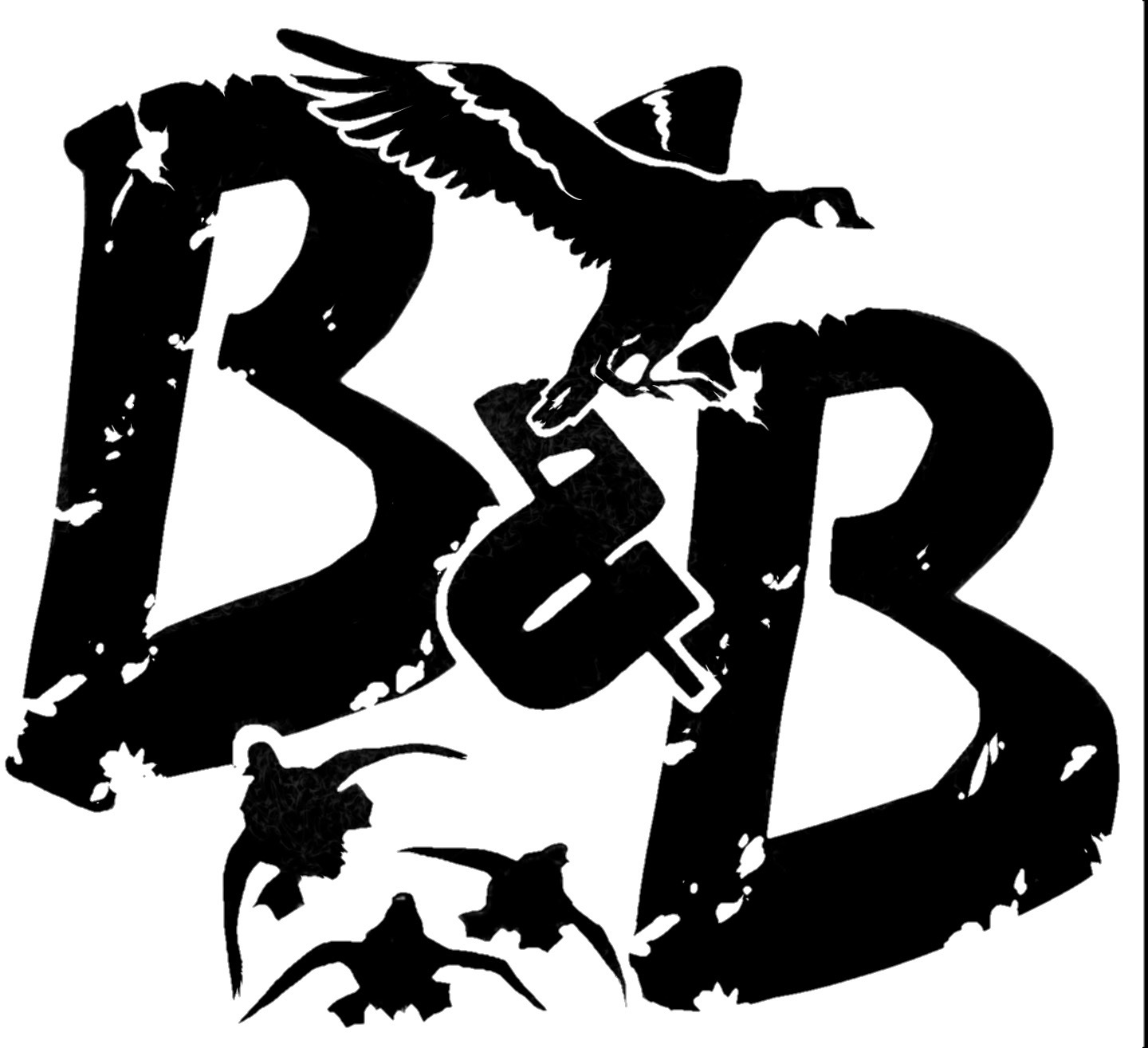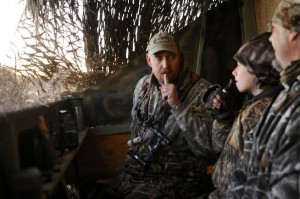WIGGINS — Some waterfowl hunters hire a guide. Those who book Cash Hogsett hire a teacher.
Hogsett, a genuine, gentle giant with the formidable profile of a modest mountain, is the founder of Birds and Bucks Outdoors, a combined guide service and hunt club that’s making a name for itself by building the future of the sport.
It stands to reason, considering that the proud father of two doubles as a vocational teacher for at-risk students within the Cherry Creek School District. Teaching is his calling. Guiding is his compulsion.
“I just find it balances my life,” Hogsett said of his autumn avocation in the fields and wetlands of northeast Colorado. “I’d never quit teaching. My reward as a teacher is getting to watch the students graduate to the next step in life, and a lot of this is the same thing. It’s just a different way to teach.”
It isn’t that Birds and Bucks caters exclusively to kids. Nor are its 25 adult members graded on their performance in the duck blind. But membership in the 2-year-old, not-for-profit partnership extends to their entire families as a reflection of their commitment to mentoring the next generation of hunters. Outside of club activities, youth — known as “greenwings” — are invited to join guided hunts for half price, and everyone is encouraged to participate in the process.
“I like to put calls in the kids’ hands and say, ‘Hey, why don’t I show you how to do it,’ ” Hogsett said. “A big part is just building the community. You go out with our guides, and it’s not going to be a sit-down-and-shut-up kind of thing. It’s more like, do you want to learn how to call? Do you want to learn how to flag? I’ll put flags in the clients’ hands and do everything I can to help them participate in the hunt, not just the harvest.”
Novice hunter programs are an important and increasingly popular portion of the mission at Colorado Parks and Wildlife. After passing a hunter education class, youths age 10-17 are eligible to participate in waterfowl hunts (and other big game and small game hunts) organized through the state’s wildlife management agency as a means of introducing novices to the activity. There are some designated hunting areas and special dates set aside exclusively for mentored youth hunting prior to standard season openers.
But just like so many shotgunners swinging on a passing bird, the issue tends to be with the follow-through. Nurturing a budding interest in hunting, fishing or any other outdoor endeavor demands far more than a day or two. Affordable hunting opportunities at a place such as like Birds and Bucks help prolong the guidance.
“It’s important to groom them and get them out there. It’s also important to show them constructive venues for their time, help them learn about the environment, introduce them to new experiences and basically give them ways to burn their energy,” Hogsett said. “I’ve seen what happens to kids that don’t have anything to do.”
A big key is finding willing mentors, and Hogsett sets the example with a personal project of his own. His godson, Billy Lott, was diagnosed with leukemia three-and-a-half years ago, just a week after he bagged his first banded mallard at age 11. The cancer has been in remission for a year now, but Lott’s motivation to return to the field remains.
“He will be my lead guide one day. I know it,” Hogsett said. “He’s got a knack for it, a talent.”
Birds and Bucks club member Kirk Douglas of Arvada also has been on a mission this season to share his passion for hunting with his 13-year-old son, Jackson.
“This is my first time duck hunting,” Jackson Douglas said as he awaited sunrise at the club’s 680-acre property between Empire and Jackson reservoirs. “I did my first goose hunt last week and got two of them. It was awesome.”
Opportunities were limited on a slow opening day of the second split for ducks in northeast Colorado last Saturday, but Jackson was offered first crack at a trio of teal that found their way to the pond. In an apparent show of solidarity, his father and two other shooters in the blind also missed the mark and were left to ponder the lesson.The education continued as the hunters pulled up their duck decoys beneath late-morning flights of Canada geese numbering well into the hundreds. Ducks, they postulated, were too widely spread or had yet to be driven south into Colorado by cold weather.
Still, there is hope for the future.
“I like to put calls in the kids’ hands and say, ‘Hey, why don’t I show you how to do it,’ ” Hogsett said. “A big part is just building the community. You go out with our guides, and it’s not going to be a sit-down-and-shut-up kind of thing. It’s more like, do you want to learn how to call? Do you want to learn how to flag? I’ll put flags in the clients’ hands and do everything I can to help them participate in the hunt, not just the harvest.”
Novice hunter programs are an important and increasingly popular portion of the mission at Colorado Parks and Wildlife. After passing a hunter education class, youths age 10-17 are eligible to participate in waterfowl hunts (and other big game and small game hunts) organized through the state’s wildlife management agency as a means of introducing novices to the activity. There are some designated hunting areas and special dates set aside exclusively for mentored youth hunting prior to standard season openers.
But just like so many shotgunners swinging on a passing bird, the issue tends to be with the follow-through. Nurturing a budding interest in hunting, fishing or any other outdoor endeavor demands far more than a day or two. Affordable hunting opportunities at a place such as like Birds and Bucks help prolong the guidance.
“It’s important to groom them and get them out there. It’s also important to show them constructive venues for their time, help them learn about the environment, introduce them to new experiences and basically give them ways to burn their energy,” Hogsett said. “I’ve seen what happens to kids that don’t have anything to do.”
A big key is finding willing mentors, and Hogsett sets the example with a personal project of his own. His godson, Billy Lott, was diagnosed with leukemia three-and-a-half years ago, just a week after he bagged his first banded mallard at age 11. The cancer has been in remission for a year now, but Lott’s motivation to return to the field remains.
“He will be my lead guide one day. I know it,” Hogsett said. “He’s got a knack for it, a talent.”
Birds and Bucks club member Kirk Douglas of Arvada also has been on a mission this season to share his passion for hunting with his 13-year-old son, Jackson.
“This is my first time duck hunting,” Jackson Douglas said as he awaited sunrise at the club’s 680-acre property between Empire and Jackson reservoirs. “I did my first goose hunt last week and got two of them. It was awesome.”
Opportunities were limited on a slow opening day of the second split for ducks in northeast Colorado last Saturday, but Jackson was offered first crack at a trio of teal that found their way to the pond. In an apparent show of solidarity, his father and two other shooters in the blind also missed the mark and were left to ponder the lesson.The education continued as the hunters pulled up their duck decoys beneath late-morning flights of Canada geese numbering well into the hundreds. Ducks, they postulated, were too widely spread or had yet to be driven south into Colorado by cold weather.
Still, there is hope for the future.
“I like to put calls in the kids’ hands and say, ‘Hey, why don’t I show you how to do it,’ ” Hogsett said. “A big part is just building the community. You go out with our guides, and it’s not going to be a sit-down-and-shut-up kind of thing. It’s more like, do you want to learn how to call? Do you want to learn how to flag? I’ll put flags in the clients’ hands and do everything I can to help them participate in the hunt, not just the harvest.”
Novice hunter programs are an important and increasingly popular portion of the mission at Colorado Parks and Wildlife. After passing a hunter education class, youths age 10-17 are eligible to participate in waterfowl hunts (and other big game and small game hunts) organized through the state’s wildlife management agency as a means of introducing novices to the activity. There are some designated hunting areas and special dates set aside exclusively for mentored youth hunting prior to standard season openers.
But just like so many shotgunners swinging on a passing bird, the issue tends to be with the follow-through. Nurturing a budding interest in hunting, fishing or any other outdoor endeavor demands far more than a day or two. Affordable hunting opportunities at a place such as like Birds and Bucks help prolong the guidance.
“It’s important to groom them and get them out there. It’s also important to show them constructive venues for their time, help them learn about the environment, introduce them to new experiences and basically give them ways to burn their energy,” Hogsett said. “I’ve seen what happens to kids that don’t have anything to do.”
A big key is finding willing mentors, and Hogsett sets the example with a personal project of his own. His godson, Billy Lott, was diagnosed with leukemia three-and-a-half years ago, just a week after he bagged his first banded mallard at age 11. The cancer has been in remission for a year now, but Lott’s motivation to return to the field remains.
“He will be my lead guide one day. I know it,” Hogsett said. “He’s got a knack for it, a talent.”
Birds and Bucks club member Kirk Douglas of Arvada also has been on a mission this season to share his passion for hunting with his 13-year-old son, Jackson.
“This is my first time duck hunting,” Jackson Douglas said as he awaited sunrise at the club’s 680-acre property between Empire and Jackson reservoirs. “I did my first goose hunt last week and got two of them. It was awesome.”
Opportunities were limited on a slow opening day of the second split for ducks in northeast Colorado last Saturday, but Jackson was offered first crack at a trio of teal that found their way to the pond. In an apparent show of solidarity, his father and two other shooters in the blind also missed the mark and were left to ponder the lesson.The education continued as the hunters pulled up their duck decoys beneath late-morning flights of Canada geese numbering well into the hundreds. Ducks, they postulated, were too widely spread or had yet to be driven south into Colorado by cold weather.
Still, there is hope for the future.

